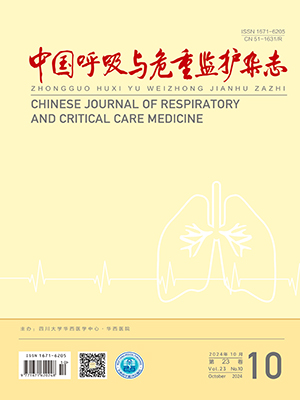Objective To observe the effects of peritoneal ventilation with pure oxygen in the rabbits with hypoxaemia and hypercapnia induced by mechanical controlled hypoventilation. Methods Sixteen rabbits were invasively ventilated after trachea incision. Hypoxaemia and hypercapnia were induced by hypoventilation which was implemented both by degrading ventilation parameters and respiratory depression induced by intravenous infusion of muscle relaxant. Then pure oxygen was insufflated into the peritoneal cavity and arterial blood gases were measured every 30 minutes for two hours. Results The PaO2 was ( 52. 50 ±3. 46) mmHg at baseline and increased to ( 76. 46 ±7. 79) mm Hg, ( 79. 62 ±9. 53) mm Hg,( 78. 54 ±7. 18) mmHg, and ( 81. 1 ±8. 3) mm Hg, respectively at 30, 60, 90, and 120 minutes after the peritoneal ventilation with pure oxgen( all P lt; 0. 05) . Meanwhile PaCO2 was ( 63. 84 ±9. 09) mm Hg at baseline and ( 59. 84 ±14. 22) mmHg, ( 59. 16 ±15. 5) mmHg, ( 60. 02 ±7. 07) mmHg, and ( 61. 38 ±6. 56) mm Hg, respectively at 30, 60, 90, and 120 minutes after the peritoneal ventilation with pure oxgen with no significant change( P gt;0. 05) . Conclusion Peritoneal ventilation can obviously improve hypoxaemia induced by mechanical controlled hypoventilation, whereas hypercapnia remains unchanged.
Citation: LUO Zhibing,SHEN Ce.. Peritoneal Ventilation with Pure Oxygen Improves Hypoxaemia of Rabbits Induced By Mechanical Controlled Hypoventilation. Chinese Journal of Respiratory and Critical Care Medicine, 2009, 09(4): 396-398. doi: Copy




